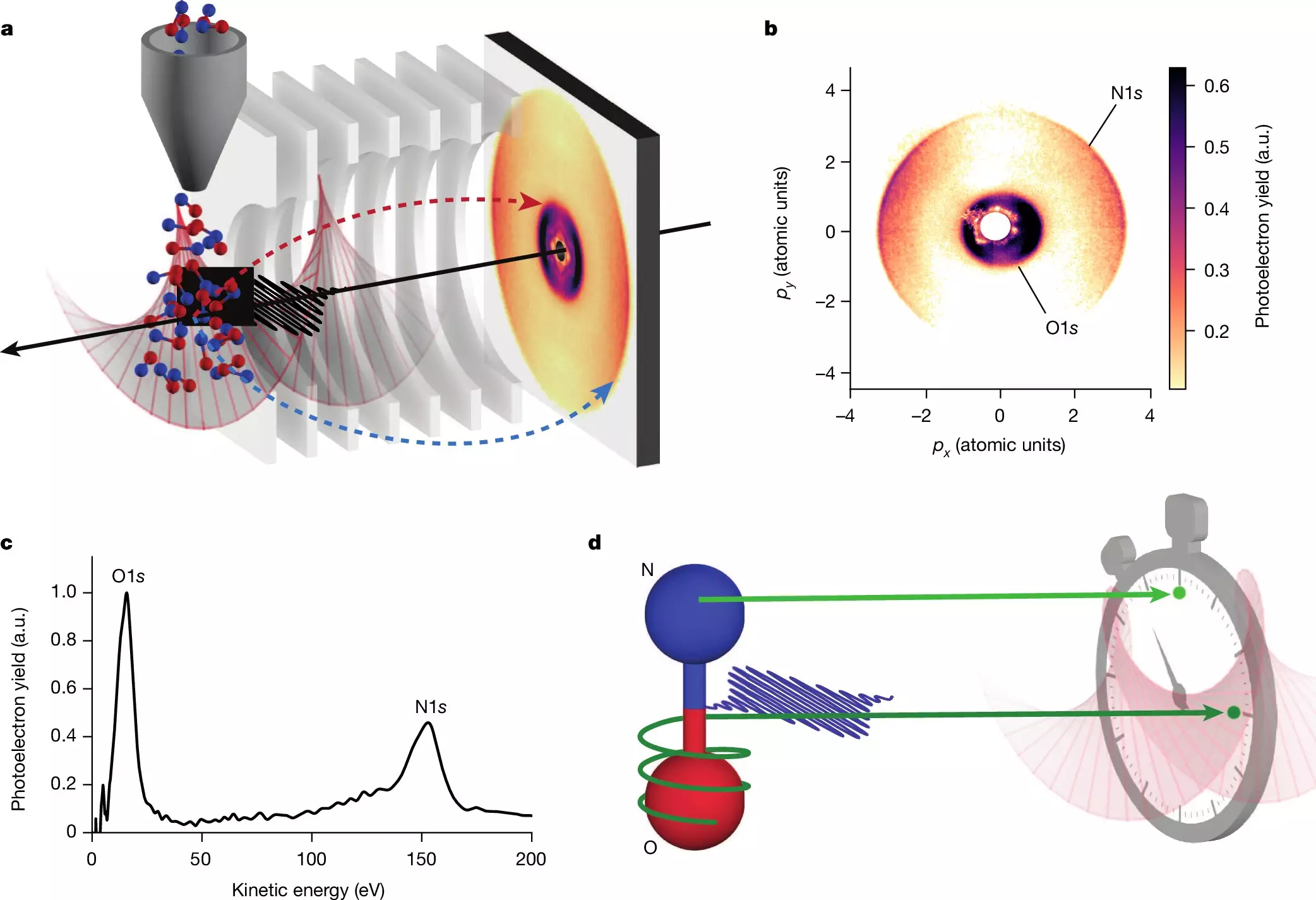Recent breakthroughs in the realm of molecular physics have unveiled intricate details about the behaviors of electrons at high speeds, particularly through the phenomenon known as attosecond delays. An international research team has succeeded in documenting these minuscule time delays that occur when electrons within a molecule are exposed to X-ray radiation. This research not only sheds light on internal atomic processes but also opens up new avenues for understanding complex molecular interactions in a variety of scientific fields.
The scientists’ method hinges on the innovative use of lasers to generate high-intensity X-ray pulses that can effectively visualize atomic activities. When an electron is ejected from an atom due to X-ray interaction, it influences and is influenced by other particles, particularly the Auger-Meitner electron. For the first time, the team recorded a significant secondary pause—arriving at delays as brief as 700 attoseconds following the initial electron ejection, indicating a much more complex interaction than previously assumed.
This finding suggests that electron dynamics within atoms may not be straightforward. When electrons are removed from their usual positions, the resulting behaviors are affected more intricately than scientists had been led to believe. As Alexandra Landsman, a co-author of this groundbreaking study and a physics professor at The Ohio State University, emphasizes, understanding these complexities is crucial, as existing theoretical frameworks may need to be enhanced to incorporate these new findings.
One of the significant challenges posed in studying such high-speed events has been the lack of appropriate technology. However, advancements in facilities like the Linac Coherent Light Source (LCLS) at Stanford University’s SLAC National Accelerator Laboratory have changed the game. The LCLS is capable of producing powerful X-ray pulses that allow researchers to conduct detailed investigations into the dynamics of complex molecules with previously unattainable precision.
This advancement is particularly significant, given that previous studies focused on attosecond delays utilizing ultraviolet light had limited success due to technological constraints. The research conducted with LCLS not only reinforces the existing knowledge of electron behavior but also radically expands it, suggesting that more complex interactivity occurs when observing deeper electron levels.
The insights garnered from this research extend far beyond mere academic curiosity. The dynamics observed can have profound implications for various fields, including cancer detection technologies. Understanding electron interactions at this highly granular level could potentially lead to innovations in how molecular markers are utilized for diagnosing blood cancers or identifying malignant tumors earlier in their development.
Additionally, the research could pave the way for exploring broader physical phenomena, providing a clearer picture of the interactions that govern the microscopic realms of nature. This is particularly exciting for scientists and engineers looking to harness attosecond science to make sense of the fundamental processes that underpin various natural behaviors.
As Lou DiMauro, co-author and physics professor at Ohio State, notes, the field could see remarkable developments emerging from the ability to study attosecond events. Researchers are poised to apply this newfound understanding of electron dynamics to numerous other branches of science, encouraging interdisciplinary collaboration that may yield unexpected insights. The complexities of light-matter interaction that have now come to light leave researchers eager to leverage these findings to unravel additional mysteries of the physical universe.
In essence, the study of attosecond delays is not merely a scientific curiosity; it is a fountain of future potential, promising advancements in our understanding of molecular dynamics and opening doors to technologies that could transform fields ranging from medicine to materials science. As scientific inquiry continues to illuminate the bizarre world of quantum mechanics, the implications and applications of these discoveries may very well redefine what is possible in the modern scientific landscape.

